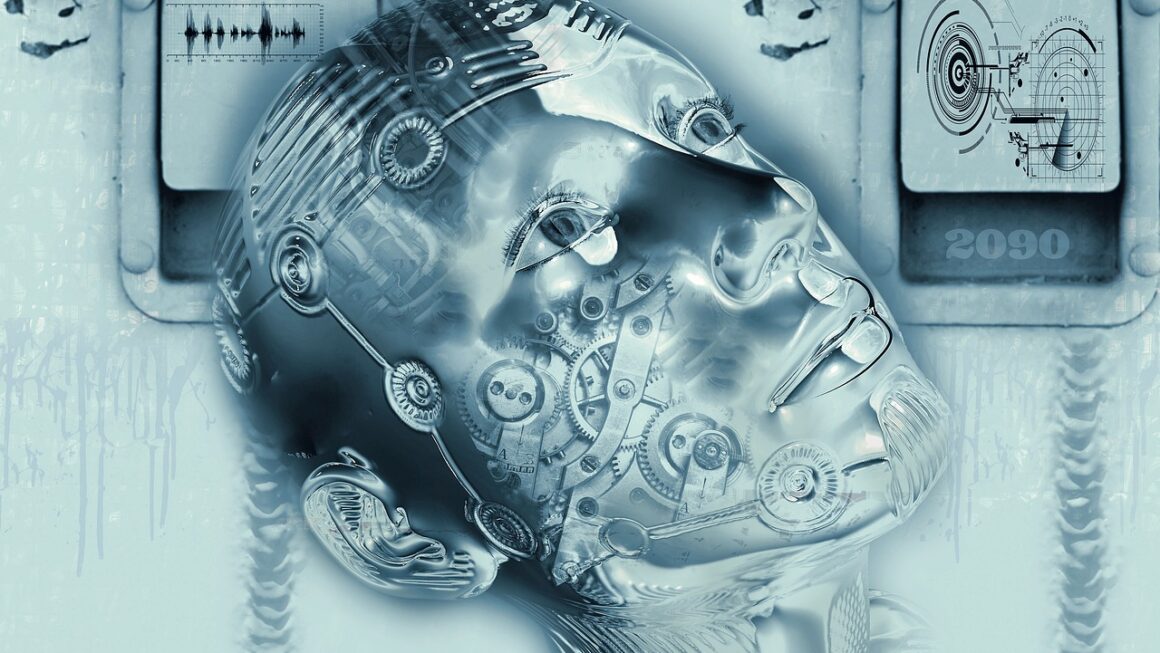The rise of Artificial Intelligence (AI) has moved from science fiction fantasy to everyday reality, impacting industries and reshaping how we live and work. From self-driving cars to personalized recommendations, AI applications are becoming increasingly sophisticated and integrated into our daily routines. This article delves into the diverse and transformative use cases of AI across various sectors, highlighting its potential to optimize processes, enhance decision-making, and drive innovation. Understanding these applications is crucial for businesses and individuals looking to harness the power of AI to achieve their goals.
AI in Healthcare
AI is revolutionizing the healthcare industry, offering solutions to improve diagnostics, personalize treatment, and streamline operations. Its potential to enhance efficiency and accuracy is paving the way for a more proactive and patient-centric approach to healthcare.
AI-Powered Diagnostics
AI algorithms can analyze medical images, such as X-rays, CT scans, and MRIs, to detect anomalies and assist radiologists in making accurate diagnoses.
- Example: Google’s AI system has shown promising results in detecting breast cancer from mammograms, potentially reducing false negatives and improving early detection rates.
- Benefit: Faster and more accurate diagnoses, leading to quicker treatment and improved patient outcomes.
Personalized Medicine
AI can analyze patient data, including genetic information, lifestyle factors, and medical history, to develop personalized treatment plans.
- Example: AI algorithms can predict a patient’s response to specific medications, allowing doctors to prescribe the most effective treatment while minimizing side effects.
- Benefit: Tailored treatment approaches that are more effective and reduce the risk of adverse reactions.
Drug Discovery
AI is accelerating the drug discovery process by analyzing vast amounts of data to identify potential drug candidates and predict their efficacy.
- Example: AI algorithms can screen millions of compounds to identify those that are most likely to bind to a specific target, significantly speeding up the initial stages of drug development.
- Benefit: Reduced drug development time and costs, leading to faster access to life-saving medications.
AI in Finance
The financial sector is leveraging AI to automate processes, detect fraud, and provide personalized financial advice. AI-driven solutions are transforming the way financial institutions operate and interact with their customers.
Fraud Detection
AI algorithms can analyze transaction data in real-time to identify fraudulent activities and prevent financial losses.
- Example: Machine learning models can detect patterns of suspicious behavior, such as unusual transaction amounts or locations, and flag potentially fraudulent transactions for further investigation.
- Benefit: Reduced fraud rates and financial losses, protecting both financial institutions and their customers.
Algorithmic Trading
AI-powered trading algorithms can analyze market data and execute trades at optimal times, maximizing profits and minimizing risks.
- Example: AI algorithms can identify patterns and trends in the market that human traders may miss, allowing them to make more informed trading decisions.
- Benefit: Increased trading efficiency and profitability, leading to higher returns for investors.
Personalized Financial Advice
AI-powered chatbots and virtual assistants can provide personalized financial advice based on individual financial goals and circumstances.
- Example: AI-powered platforms can analyze a user’s income, expenses, and savings goals to recommend investment strategies and budgeting plans.
- Benefit: Increased access to financial advice, helping individuals make informed decisions about their finances.
AI in Manufacturing
AI is transforming the manufacturing industry by optimizing production processes, improving quality control, and enabling predictive maintenance. These applications are leading to increased efficiency, reduced costs, and improved product quality.
Predictive Maintenance
AI algorithms can analyze data from sensors and equipment to predict when maintenance is needed, preventing costly breakdowns and downtime.
- Example: AI-powered systems can monitor the vibration and temperature of machinery to detect early signs of wear and tear, allowing maintenance teams to schedule repairs before a failure occurs.
- Benefit: Reduced downtime and maintenance costs, leading to increased productivity and profitability.
Quality Control
AI-powered vision systems can inspect products for defects with greater accuracy and speed than human inspectors.
- Example: AI algorithms can analyze images of products to identify imperfections, such as scratches, dents, or missing components, ensuring that only high-quality products are shipped to customers.
- Benefit: Improved product quality and reduced waste, leading to increased customer satisfaction and reduced costs.
Optimized Production Processes
AI can optimize production processes by analyzing data from various sources, such as sensors, equipment, and supply chain information, to identify areas for improvement.
- Example: AI algorithms can optimize the scheduling of production runs, the allocation of resources, and the routing of materials to minimize waste and maximize efficiency.
- Benefit: Increased production efficiency and reduced costs, leading to improved profitability.
AI in Retail
AI is revolutionizing the retail industry by personalizing customer experiences, optimizing inventory management, and enhancing marketing efforts.
Personalized Recommendations
AI algorithms can analyze customer data, such as purchase history and browsing behavior, to provide personalized product recommendations.
- Example: E-commerce platforms can use AI to recommend products that a customer is likely to be interested in based on their past purchases and browsing history.
- Benefit: Increased sales and customer loyalty, leading to higher revenue and market share.
Inventory Management
AI can optimize inventory management by predicting demand and ensuring that the right products are in stock at the right time.
- Example: AI algorithms can analyze historical sales data, seasonal trends, and market conditions to forecast demand and optimize inventory levels.
- Benefit: Reduced inventory costs and improved customer satisfaction, leading to increased profitability.
Chatbots and Virtual Assistants
AI-powered chatbots and virtual assistants can provide customer support, answer questions, and guide customers through the purchasing process.
- Example: Retailers can use chatbots to answer frequently asked questions, provide product information, and assist customers with placing orders.
- Benefit: Improved customer service and reduced operational costs, leading to increased customer satisfaction and profitability.
Conclusion
AI’s potential is vast and continuously expanding. As AI technologies evolve and become more accessible, we can expect to see even more innovative and transformative use cases emerge across various industries. Embracing AI and understanding its capabilities is crucial for businesses and individuals seeking to stay competitive and thrive in the increasingly digital world. By leveraging AI’s power, organizations can unlock new opportunities, optimize processes, and create a future where technology empowers us to achieve more than ever before.




